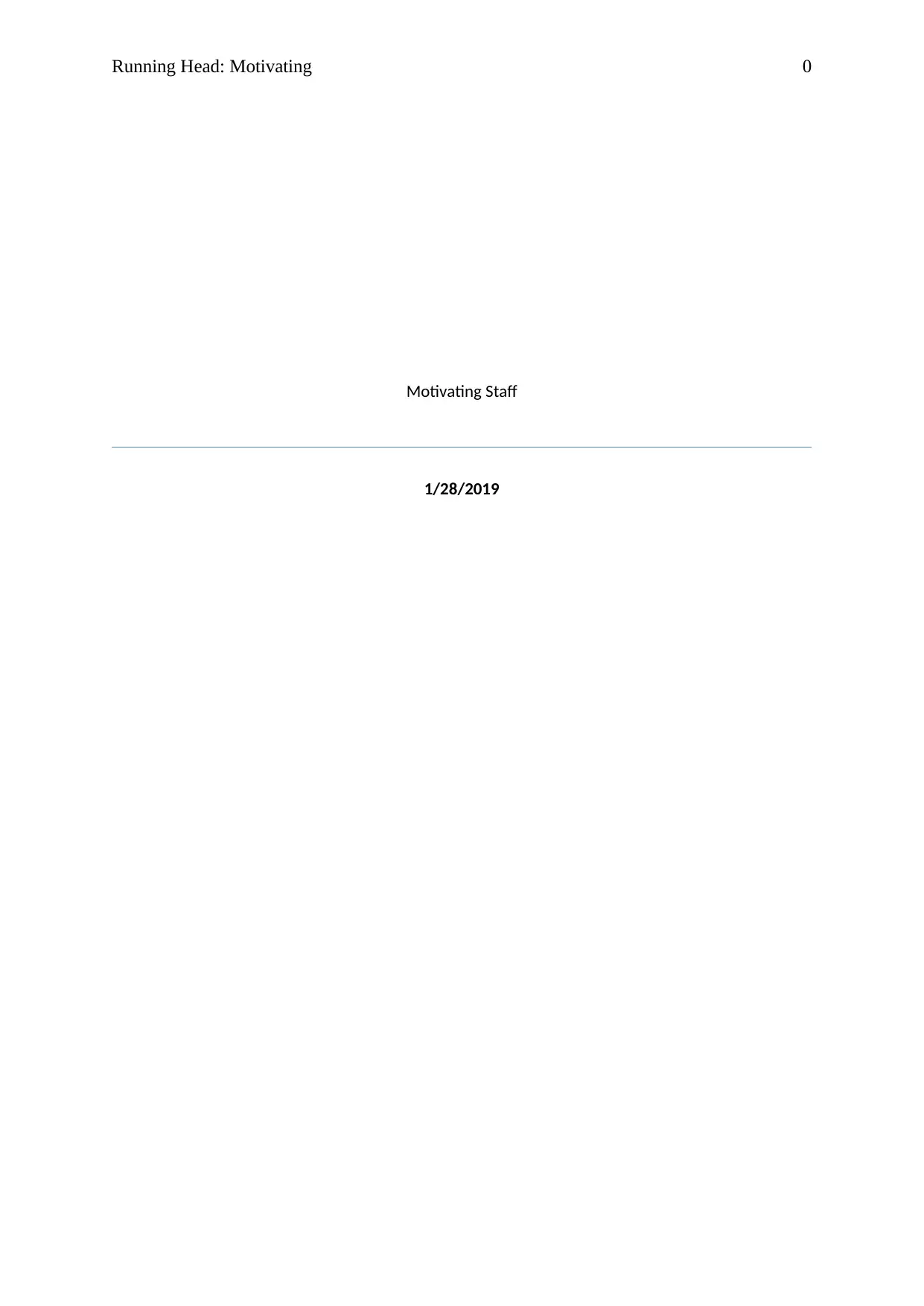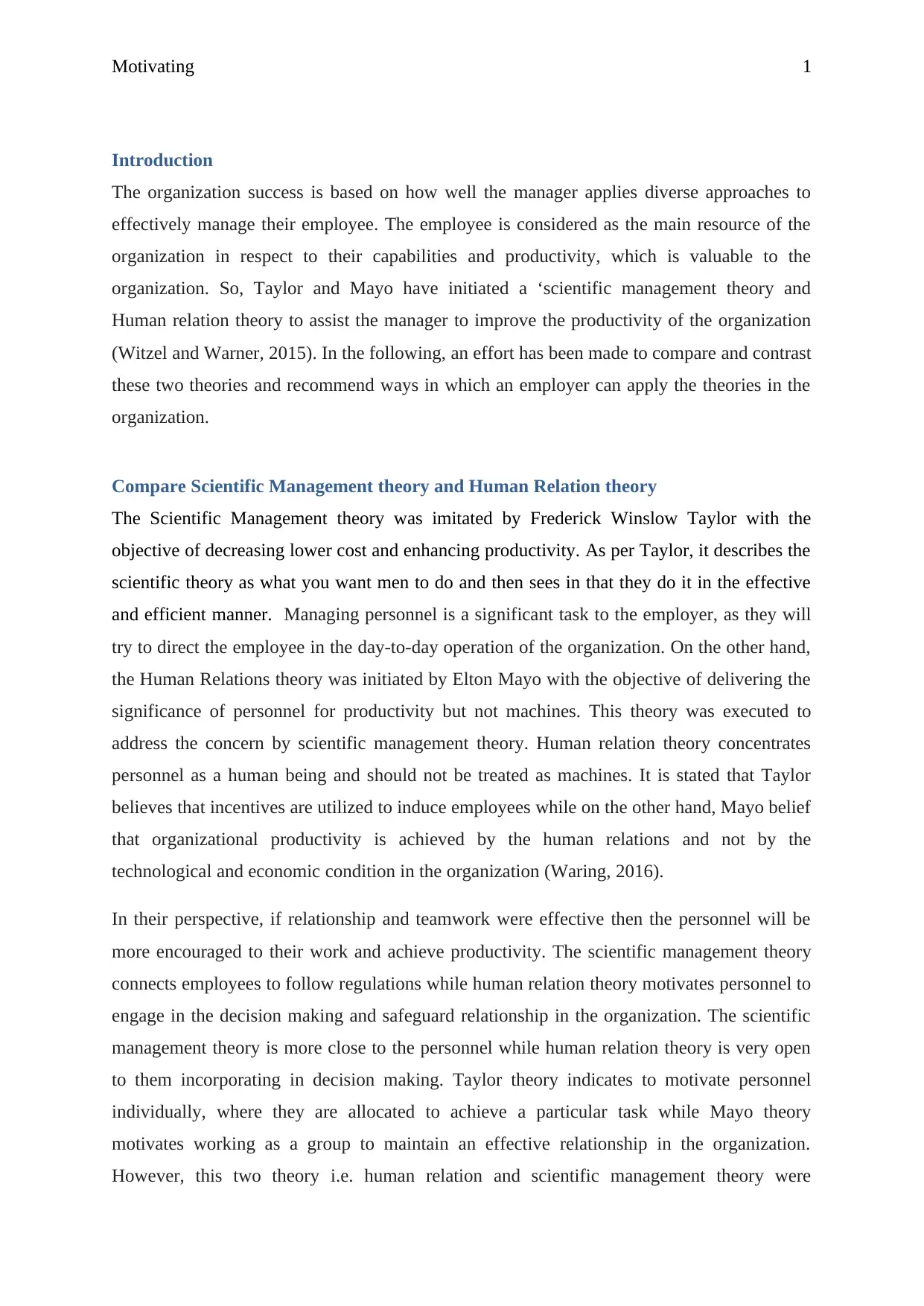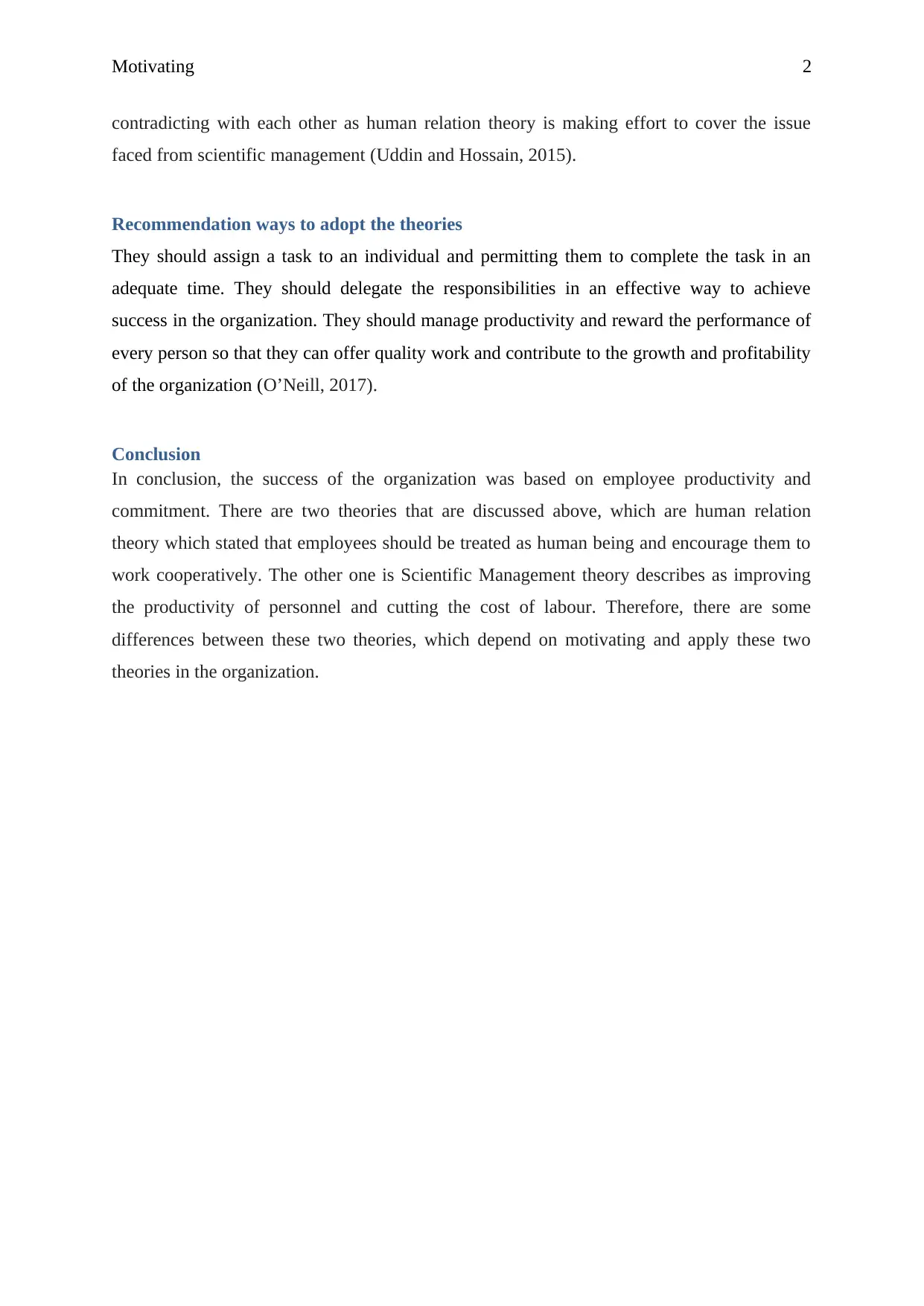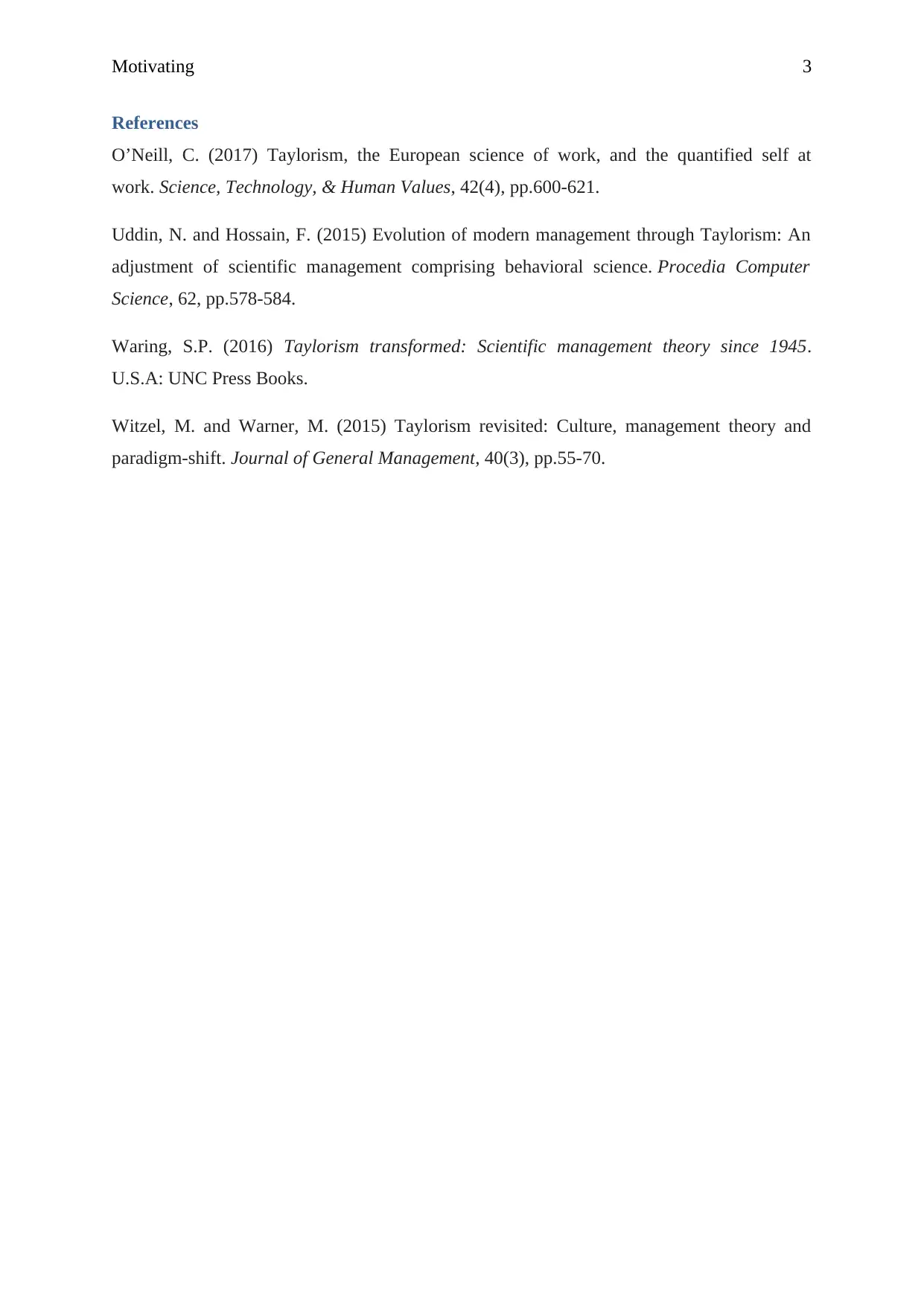Comparing Taylor and Mayo: Theories for Motivating Staff Effectively
VerifiedAdded on 2023/04/25
|4
|767
|362
Essay
AI Summary
This essay provides a comparative analysis of Frederick Taylor's Scientific Management theory and Elton Mayo's Human Relations theory, both aimed at enhancing organizational productivity through effective employee management. The Scientific Management theory focuses on optimizing efficiency and reducing costs by scientifically analyzing and standardizing work processes, while the Human Relations theory emphasizes the importance of human factors, such as relationships and teamwork, in boosting employee motivation and productivity. The essay contrasts these approaches, highlighting their differing perspectives on employee motivation, decision-making involvement, and individual versus group work dynamics. Furthermore, it offers recommendations on how managers can integrate aspects of both theories in the workplace, such as assigning tasks with adequate time, delegating responsibilities effectively, and rewarding performance to foster a motivated and productive workforce. The conclusion underscores the significance of employee productivity and commitment to organizational success, advocating for a balanced approach that considers both efficiency and human relations.
1 out of 4











![[object Object]](/_next/static/media/star-bottom.7253800d.svg)